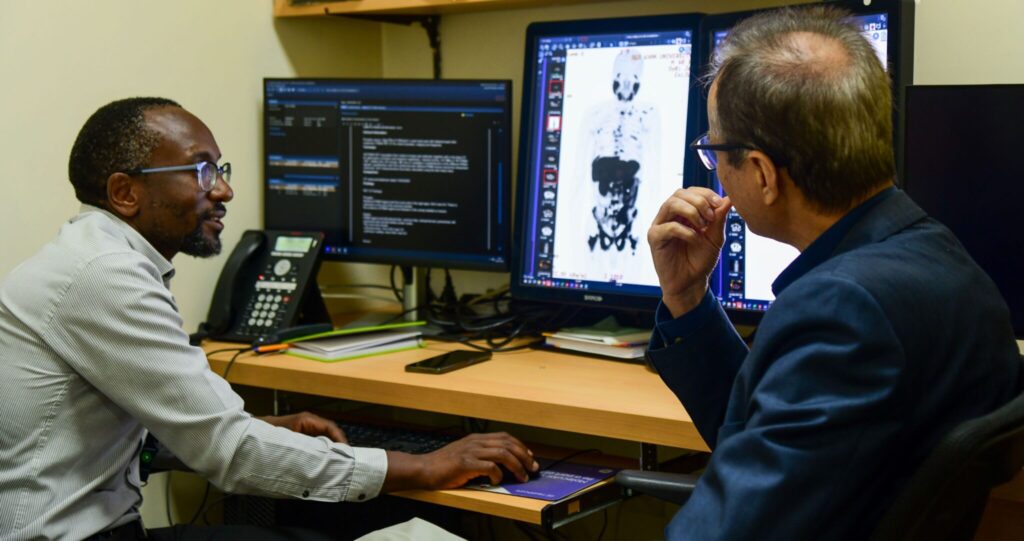Aga Khan University Hospital, Nairobi has introduced Lutetium-177 prostate‑specific membrane antigen (PSMA) therapy, becoming the first facility in Kenya to provide this advanced nuclear medicine option for men with metastatic castrate‑resistant prostate cancer (mCRPC). The therapy is intended for patients whose disease has progressed despite conventional androgen deprivation strategies, second‑line hormonal agents, or chemotherapy, and who previously faced severely limited local treatment choices.
Lutetium-177 PSMA therapy couples a beta‑emitting radionuclide with a ligand that binds selectively to PSMA, a protein abundantly expressed on most prostate cancer cells, especially in metastatic and treatment‑resistant states. Once administered, the radioligand circulates, attaches to malignant cells, and delivers a cytotoxic radiation dose from within the tumor microenvironment, while sparing a greater proportion of surrounding healthy tissue compared with many systemic alternatives. This targeted mechanism can translate into delayed disease progression, symptom relief, and extended survival for appropriately selected patients.
The hospital’s adoption of the therapy builds on a sequence of earlier technological milestones. Installation of a PET/CT scanner and on‑site cyclotron in 2018 expanded regional capacity for advanced diagnostic imaging and tracer production. Introduction of PSMA PET/CT imaging in 2020 further refined prostate cancer staging and response assessment; more than 3,000 PSMA PET/CT examinations have since been performed, improving precision in therapeutic planning. The new therapeutic service represents a logical extension of that imaging platform into theranostics integrating diagnostic molecular imaging and targeted radionuclide treatment.
Prostate cancer is the most frequently diagnosed malignancy among men in Kenya and remains a leading contributor to male cancer mortality worldwide. Expanding access to evidence‑based therapies locally may reduce the need for patients to travel abroad, shorten waiting times, and facilitate earlier intervention in aggressive disease phenotypes. Establishing Lutetium-177 PSMA capability also requires stringent protocols for radiopharmaceutical handling, patient selection, dosimetry considerations, radiation safety, and multidisciplinary coordination among nuclear medicine, oncology, urology, medical physics, and nursing teams.
By incorporating this therapy into its oncology portfolio, the hospital underscores a broader commitment to elevating regional standards of care through innovation and patient‑centered delivery. The launch signals continued progress toward comprehensive, locally accessible prostate cancer management pathways that span advanced molecular imaging, personalized systemic therapy, and ongoing outcome evaluation. The introduction also positions the institution to participate in regional clinical research, generate local outcome data, train specialist personnel, and potentially collaborate on future alpha‑emitter or combination regimens that could further individualize care for advanced disease, effectively across Kenya and the region.

